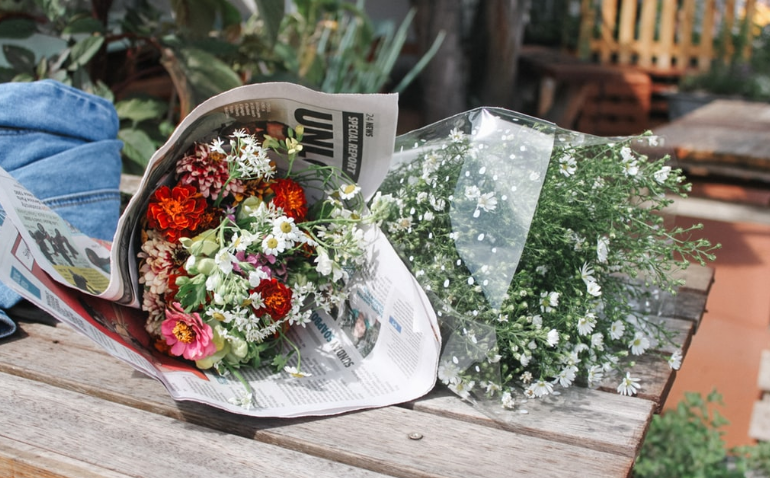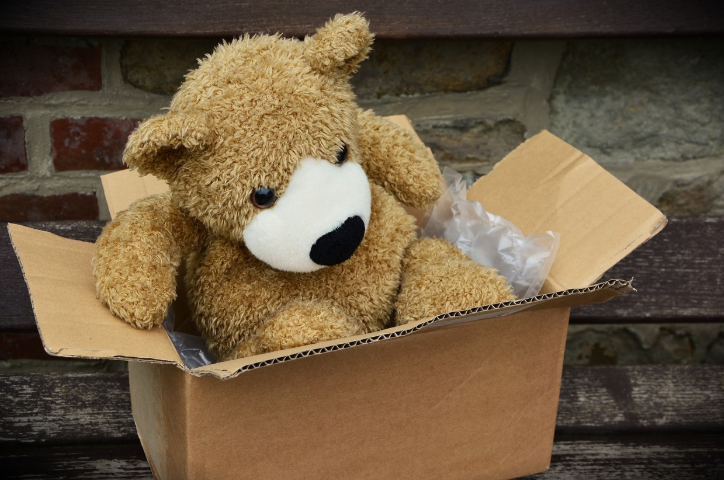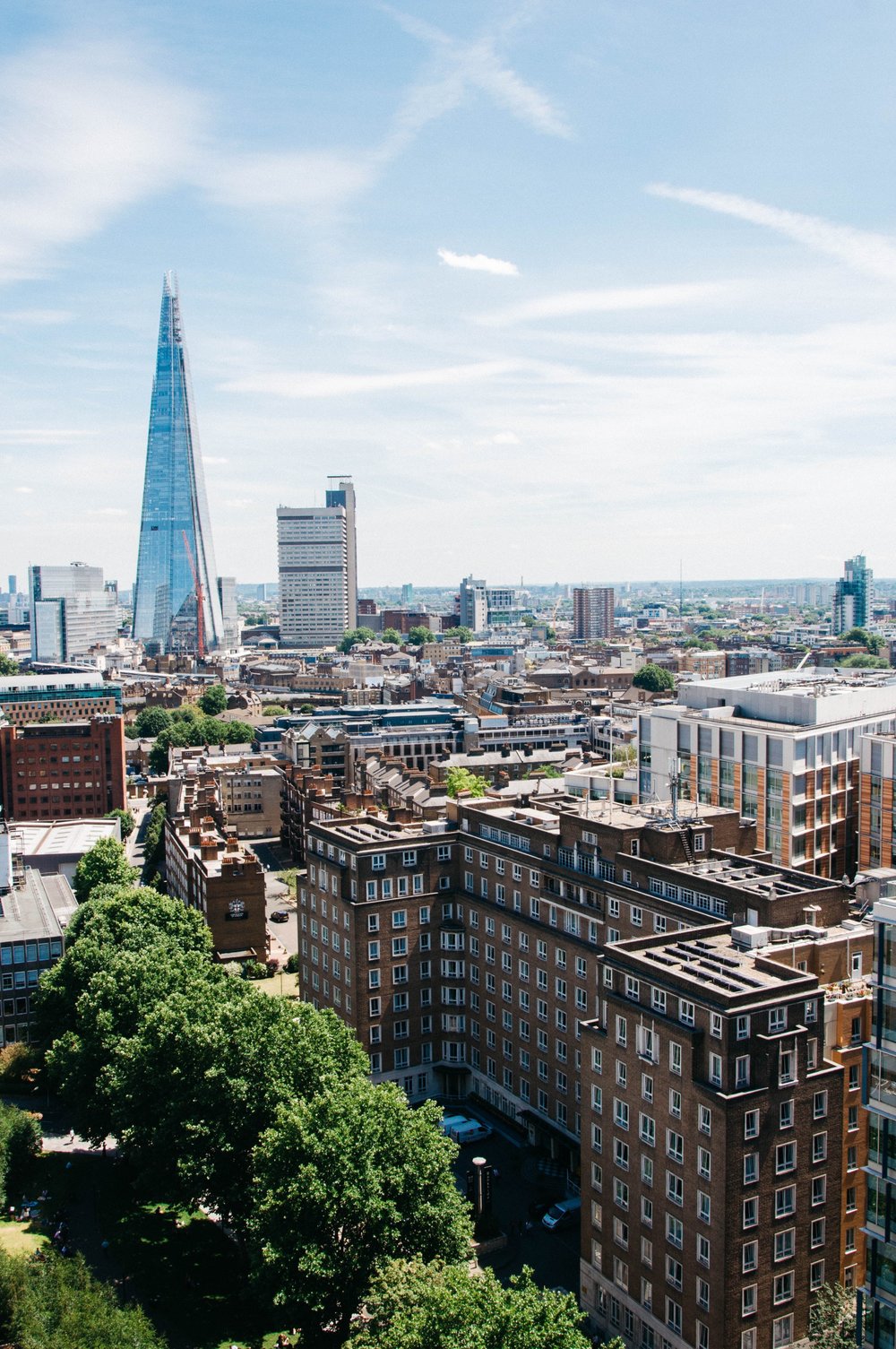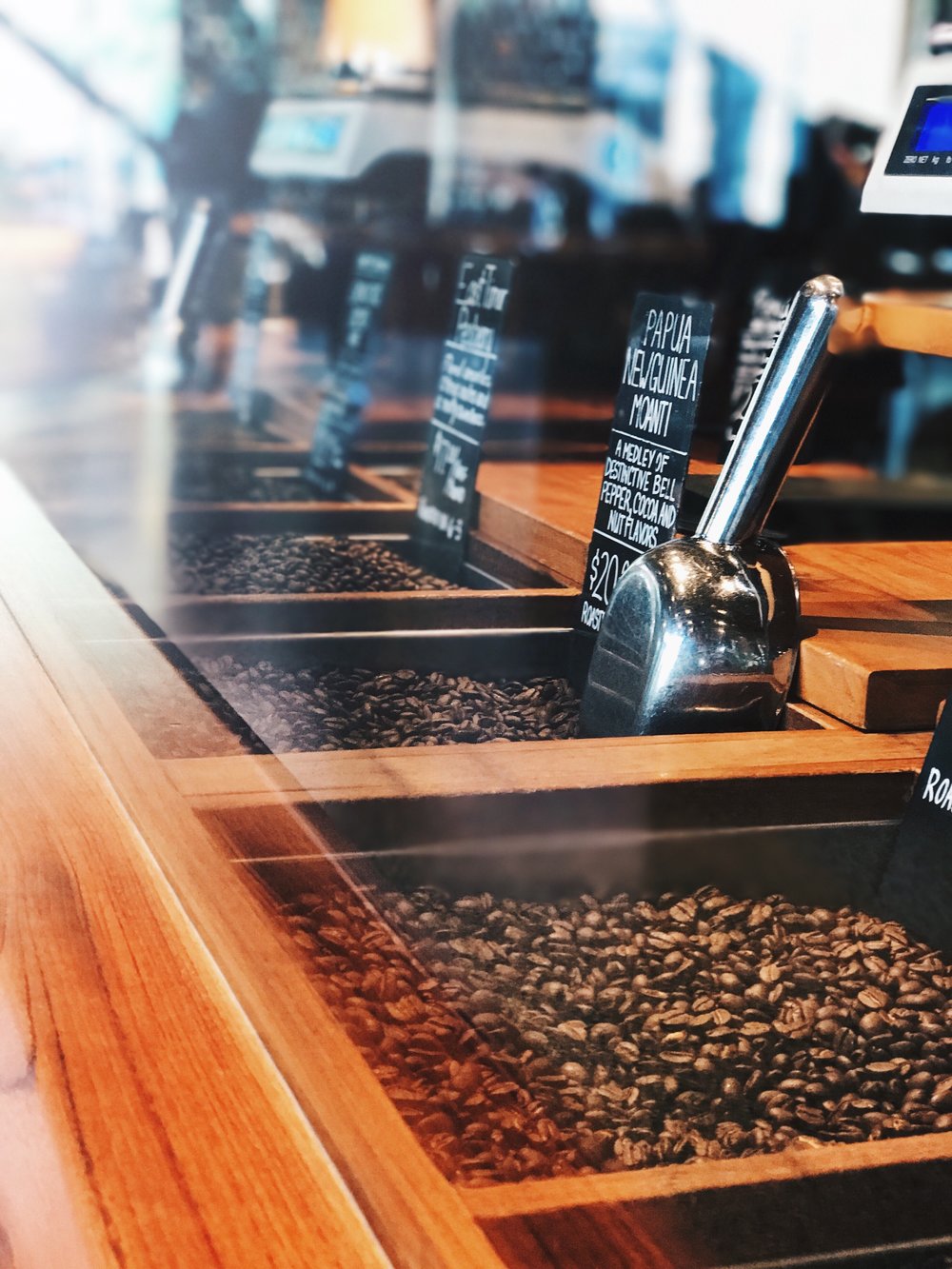My Problems With Zero Waste
Posted by Pawan Saunya onThe Zero Waste movement started with author and environmentalist Bea Johnson. Her book, “Zero Waste Home”, published in 2013, popularized the movement. Her original message was to create as little waste as possible through things like homemade recipes and bringing your own containers to the shops, but the message she originally spread has evolved a lot since then.
What’s wrong with Zero Waste?
Nowadays, the movement is very popular and remains true to its roots, but some of the mindset behind the movement has changed. A lot of people have been conveying the idea (mostly through Instagram) that zero waste needs to look perfect; You need to have matching jars, a beautiful fridge full of loose produce, and create absolutely no waste no matter the circumstance. But is this truly possible?
Let’s be honest- no. Viewing zero waste this way carries the wrong values and makes us think that we are failing each time we create waste or our home looks a little messy. This is not how we should be feeling when we are trying to make positive changes in our lives. The term zero waste goes more with perfectionism than with trying your best. The movement should be something collective, not a competition to see who is doing the best and creating the least amount of waste. We should be supportive of one another through swapping eco-friendly tips and tricks, and inspiring each other to advocate for a clean environment.
Accessibility
This is another problem with the movement. Even though zero waste is very popular, not everyone has access to unpackaged food and other products. It may be easy to find in big cities, but not so much in towns and villages and other rural areas. Not everyone has a car or the means to take the bus or train to a city that has a zero waste shop. It’s not as easy as just moving somewhere to get better access. No one should ever feel like they are failing because the area they live in doesn’t have access to unpackaged food or zero waste shops.

Making Mistakes
It’s normal to make mistakes; No one is perfect and we’re all on a learning curve. We all make mistakes when we buy zero waste things that we think we need when actually, we don’t. That’s ok, just give this item to someone who needs it. Another mistake is that you might buy something that looks zero waste on the internet, but when it arrives, it's wrapped in plastic. Another common mistake is to think you need to buy everything new, especially jars so that they all match. The best thing to do is to reuse what you already have (like pasta sauce jars) or buy from thrift stores. Beauty is found in difference. If everyone was doing something the same way, how boring would the world be?! Having a low impact lifestyle should be affordable, hence reusing what you already have without feeling the pressure for it to look a certain way.

Low Impact Movement
Immy from Sustainably Vegan created the Low Impact Movement which represents the values of the lifestyle so much more. It’s about doing your best, not being the best, and understanding that creating zero waste isn’t possible, but we should all try our best to be kind to the earth. We don’t all have the same access to unpackaged foods, but we can still do all that we can and use resources like the internet which has made access to sustainable, ethical, zero waste online shops easy, and also has a wealth of low impact DIYs. A low impact lifestyle sounds much more feasible, accessible, and low-stress than a zero waste lifestyle.

Pauline Chicart
Is a contributor for Zero Waste Club. She runs the travel & sustainability blog greenwanderess.com and is a photographer as well. Discovering beautiful landscapes around the world made her want to do everything possible to conserve and protect our planet. After she started her journey towards a low impact lifestyle, her interest in sustainability grew. She became vegetarian and then vegan. You can find her on Instagram @green.wanderess and @pmc.photos
Zero Waste Packaging
Posted by Pawan Saunya onPackaging is everywhere in our world, and it causes a lot of environmental problems because of unsustainable production and disposal methods. To me, the word “packaging” itself already insinuates that it’s pretty much a waste because it served its only purpose after you have unpacked your goodies. A lot of packaging is inevitable because it is so widely utilized, but there are steps you can take to help defeat your consumption of packaging. Reusing packaging, disposing of it in an eco-friendly way, and avoiding single-use plastic packaging are all awesome ways to apply zero-waste principles to your packaging consumption. Here are some ideas to reduce packaging at home, at the food shop, and when shipping parcels, as well as some information on both the disposal and production of packaging materials.

At Home
While at home, you probably use a lot of cling-film and foil in the kitchen to store leftovers and half-eaten produce. To save money and reduce your packaging consumption, try replacing these single use materials with:
Glass- jars and bottles
Soy wax food wraps
Silicone food covers/ lids for dishes
Silicone storage bags
Bamboo or stainless steel containers

At The Food Shop
When food shopping you will encounter a lot of food wrapped in single-use, plastic packaging. To avoid this environmental nightmare as much as possible, follow these shopping tips:
Bring reusable shopping bags
Use mesh or cotton bags for produce and other loose items like bread
Use glass jars or cotton bags to buy food in bulk
If you have to buy food in packaging, opt for materials like aluminum, metal, glass, or cardboard (make sure the cardboard isn’t lined with plastic).
Opt for plant based foods produce, rice, beans, etc.- they usually come in less packaging, and are better for your heart and wallet!

Shipping Parcels
A lot of packaging is required to ship parcels, especially if the goods you’re shipping are fragile. To be more environmentally friendly when shipping, re-use materials you already have and only buy new materials when necessary. The best materials include things like:
Cardboard
Paper, magazines, and newspapers
Bio-degradable packaging peanuts
Mushroom, seaweed and other natural plant-based packaging alternatives
Corrugated bubble wrap
Paper tape

Disposing of Packaging
A lot of packaging waste is inevitable in the world we live in, so it’s important to take measures to dispose of packaging in as eco-friendly of a way as possible. This means recycling and composting all that you can, and sending the bare minimum to the landfill. Aluminum and glass are great because they can be infinitely recyclable. Plastic, on the other hand, is recycled differently based on where you live and what type of plastic it is. For example, most plastic bottles can be recycled while most plastic films cannot. Click here for more information on packaging recycling.
Production of Packaging
A very important point to keep in mind when deciding what packaging to use is not only if it can be recycled or composted, but also if the production of the packaging you’re consuming is sustainable. Are the production methods considering the environment, air, and water, keeping everything as clean and toxic-free as possible? We live in a truly great time technology-wise and we do have SO many innovative, biodegradable, and sustainable packaging choices available now that are not only environmentally-friendly in terms of their disposal, but also in their production. As far as availability goes, they exist but are not the most popular choice, so you’ll have to search for them. There are some materials though, like cork, that are both popular and sustainable in production and disposal.
Zero Waste Production + Zero Waste Disposal = Happy Planet.
What kind of zero-waste alternatives do you use to ditch single-use plastic? Are there other zero-waste packaging options that you know about? Share your ideas in comments.

Monta Musinska
Hi! I’m a full-time mom to two amazing boys. In between chasing them around, homeschooling and all other things, I really enjoy nature, reading, meditating, self-development, travelling, capturing moments on camera and, in general, trying to be a considerate and compassionate human being and teaching the same to my boys. Minimalist, zero-waste, and healthy plant-based living is my passion and my way of living, and now as an intern blog writer for Zero Waste Club, I’ll be writing about these things and spreading the message. You can find me on Instagram @montamusinska
Zero Waste Benefits More Than Just The Environment
Posted by Pawan Saunya onIt’s no doubt that living a zero waste and generally low impact lifestyle greatly benefits the environment. If you create less waste, you’re demanding less resources, helping to curb plastic pollution, and are making an effort to avert the climate crisis. What most people don’t think of is how this lifestyle benefits more than just the environment- it benefits our economy and our communities, too.
Integrating zero waste principles into businesses and local economies means resources are recirculated throughout the economy rather than being used once and then disposed of. This recirculation component leads to the creation of green jobs- benefiting both local communities and economies. A case study in Ontario, Canada showed that the recycling, composting, and diversion programs that are integrated into a zero waste economy generate 10 times more jobs than a generic landfill system. This isn’t just the case for Canada- a study conducted in Europe said that 500,000 jobs could be created if countries upped their recycling rate to 70%, and a study in the U.S. showed similar results, saying that 1.1 million jobs could be created if the country upped their recycling rate to 75%. The jobs that recycling creates are also well-paying and have a low barrier to entry, making the work accessible to all.

Businesses could save a lot of money by integrating zero waste principles into their frameworks. Companies who reduce their waste decrease their need for resources and energy, which in turn saves them money, all while helping the environment. One hospital put this sentiment to the test, and ended up saving $5.6 million. When businesses save money on resource and energy consumption, they can put more money towards research and development, job creation, and charity- which ultimately goes to helping the greater good.
The greater good is also benefited when zero waste principles are used to reduce food waste. A large part of food waste reduction frameworks is getting restaurants, grocery stores, and community members to donate food (that they would otherwise throw away) to food banks. Not only is this extremely effective in reducing waste, but it also allows food banks to help more community members in need. In the U.S., nearly half of the food in the U.S. goes to waste, and millions go hungry everyday. One non-profit, Feeding America, utilized the zero waste principle of food rescue to help combat both of these issues- and it worked. They recovered 3.5 billion pounds of food, and it all went to directly to feed those in need.

Going zero waste also helps spur the economy of local communities. When you go zero waste, you’re going to increase your reliance on local artisans and farmers to supply you with sustainably made products and produce. By buying local, you’re spurring your local economy and supporting fellow community members rather than large, polluting corporations. This practice of supporting local has been shown to be more beneficial for the overall economy than supporting large corporations. Buying food locally has also been proven to increase community health and create a safer food supply chain, all while benefiting the environment.
Overall, the heart of the zero waste movement is in environmental protection and sustainability, but the benefits spill over into almost all facets of life. The economy, local communities, and those in need are all benefited when zero waste principles are utilized by businesses, governments, and individuals alike.
How has going zero waste benefited your life?

Kayla Guilliams
Is the blog manager for Zero Waste Club, combining her love for writing with her passion for all things environmental sustainability. She is currently a student at the University of North Carolina at Chapel Hill where she is studying journalism, environmental studies, and food studies in hopes of building a career in environmental activism. You can find her on Instagram as @kaylaguilliams.
Zero Waste Shopping in London
Posted by Pawan Saunya on
Want to know the best ways to shop zero waste whilst living or working in a big city? Here I give you some tips on shopping zero waste in London from independent shops to supermarket chains.
Following a low waste lifestyle may seem challenging, especially when it comes to food shopping considering you have to do it on a regular basis and everything is wrapped in plastic!

Buying package free in London is fairly accessible and easy nowadays, with bulk stores and refill shops opening up all over the city, supermarkets slowly responding to consumer demand for less packaging or recyclable alternatives to plastic, and cafes and restaurants allowing you to bring your own coffee cups and tupperwares for takeaways. Here are some tips to help you take advantage of the eco-friendly options that London has to offer.
Bulk Stores:
The first and obvious choice when it comes to zero waste shopping are bulk stores; where you can bring your own up-cycled jars, bottles and boxes to refill with dried goods, oil, vinegar, washing liquids, etc… Here are a few of my favourites across the city: (remember to bring all your empty containers and reusable bags!)
West:
Source Bulk Foods in Chiswick and Battersea and Liberté Chérie in Portobello
North:
Harmless Store in Wood Green
East:
The bulk market in Hackney and the Re:Store in Hackney
South:
Health food stores with bulk sections around the city:
Neal’s Yard Remedies, for package free dried herbs, powders, and spices, in selected stores.
Farmers Markets:
Your next obvious option is your local farmers’ market. It may take place daily, weekly, or monthly in your area. Take a visit and compare prices to see what is worth buying there (package free) on a regular basis. They’re also a good option since the produce is more likely to be local and in season.
Grocers:
Similarly, grocers or farm shops are independent and have their own fresh fruit and vegetable selection with plastic free produce. They also breads, and sometimes more, that you can buy in brown paper bags (which are biodegradable).
Supermarkets:
Lastly, and most conveniently, are supermarkets. This is still a great option for zero waste shopping once you have made note of what you can buy package free, or in packaging that can be up-cycled. For example, which fruits and vegetables are free of plastic wrapping, condiments in glass jars, grains and cereals in paper bags or boxes, sauces in tin cans, etc.. Always go for food in no packaging, or food packaged in materials like glass, metal, or cardboard.
Online Stores:
Here are some of my favourite online zero waste stores that provide really convenient service.
Zero Waste Club – check out the shop for a range of dried goods, cleaning supplies, and everyday items all delivered in plastic free packaging. They also plant a tree with every purchase.
Abel & cole, Riverford, Oddbox, and The Organic Delivery- These are all companies that deliver fresh produce loose in cardboard boxes or compostable/ recyclable packaging that can be returned at the next delivery. However, double check that the items you are buying are delivered without any plastic

Happy zero waste shopping, Londoners!

Salomé Savary
Is working as an intern for Zero Waste Club, writing blog posts on all things zero waste, from cooking tips to travelling hacks. She is passionate about encouraging others to adopt low waste habits in any and every aspect of their lives.
5 Ways Zero Waste Could Save You Money
Posted by Pawan Saunya onEnvironmental movements have been touted as movements for the rich and elite throughout history. This misconception has persisted through to modern environmental movements, and because of this, many think that the zero waste movement is for those who are rich enough to afford it- which isn’t true. Living zero waste won’t only reduce your waste and overall impact on the planet, but it will save you money, too. Here’s 5 ways that going zero waste could save you money.
Buy Less
A zero waste lifestyle parallels with minimalistic principles because a big component of the lifestyle is just generally buying less. Buying less means you’re demanding less products to be made, meaning less resources and energy is demanded to make products. By demanding less resources, you’re reducing emissions related to product production and transport, as well as resource extraction. So, when you buy less, you’re helping the earth and spending less money at the same time. It’s a win-win.

Buy Used
Thrifting is a big aspect of a zero waste lifestyle, not only because it lessens your environmental impact, but also because it’s so cheap. Thrifting means you aren’t demanding any more new products to be made, so you’re saving resources and emissions. You can also buy a dress at thrift shop for less than half the price as a new one. By buying used you also aren’t supporting the fast fashion industry- one of the most wasteful, unethical, and polluting industries in the world. Thrifting will save you money, save the earth, and it’s a fun way to find some unique clothes.

Buy Bulk
Buying bulk foods not only cuts down on food packaging waste, but it can also save you money. When you buy from bulk bins, you don’t have to account for the cost of packaging, meaning the products are (generally) cheaper. You also only have to buy what you need, so you won’t waste any money on food you don’t need. This also cuts down on food waste.

Buy Local
If you buy produce locally from the farmers market, you’re probably getting some of the best organic produce around at one of the best prices available. Produce at a farmers market doesn’t have to be transported as far as most of the produce you’ll find in a traditional grocery store, so that cost is cut out of the product. One study showed that organic produce is around 40% cheaper at farmers markets than at traditional grocery stores.

Don’t Buy Single Use
The zero waste lifestyle contains little single-use, disposable products, and instead favors reusable products made out of materials like cloth, metal, and wood. While reusable products are generally a bigger investment upfront, they can save you a ton of money in the long run. Switching plastic water bottles for a reusable water bottle can save the average family $6,000 over 5 years, and similar savings can be found by switching from disposable paper products like napkins and paper towels to reusable cloths.

How has zero waste saved you money?

Kayla Guilliams
Is the blog manager for Zero Waste Club, combining her love for writing with her passion for all things environmental sustainability. She is currently a student at the University of North Carolina at Chapel Hill where she is studying journalism, environmental studies, and food studies in hopes of building a career in environmental activism. You can find her on Instagram as @kaylaguilliams.
